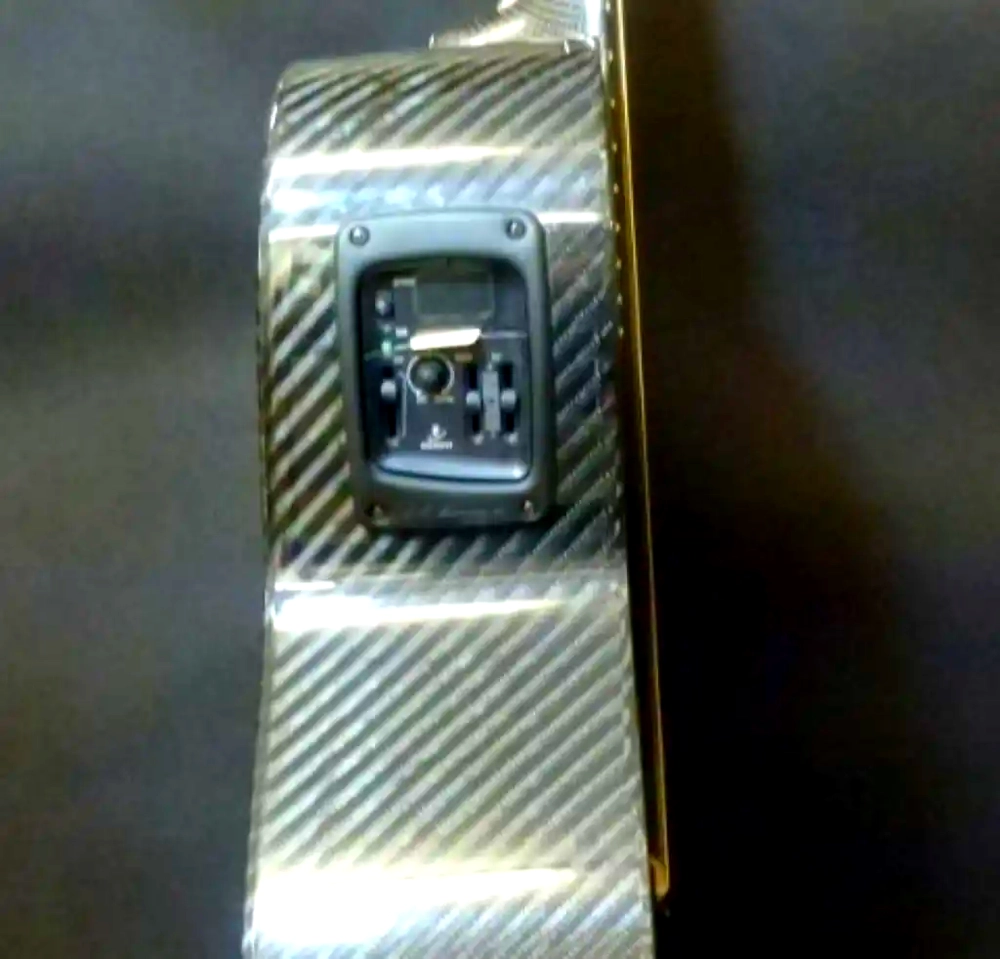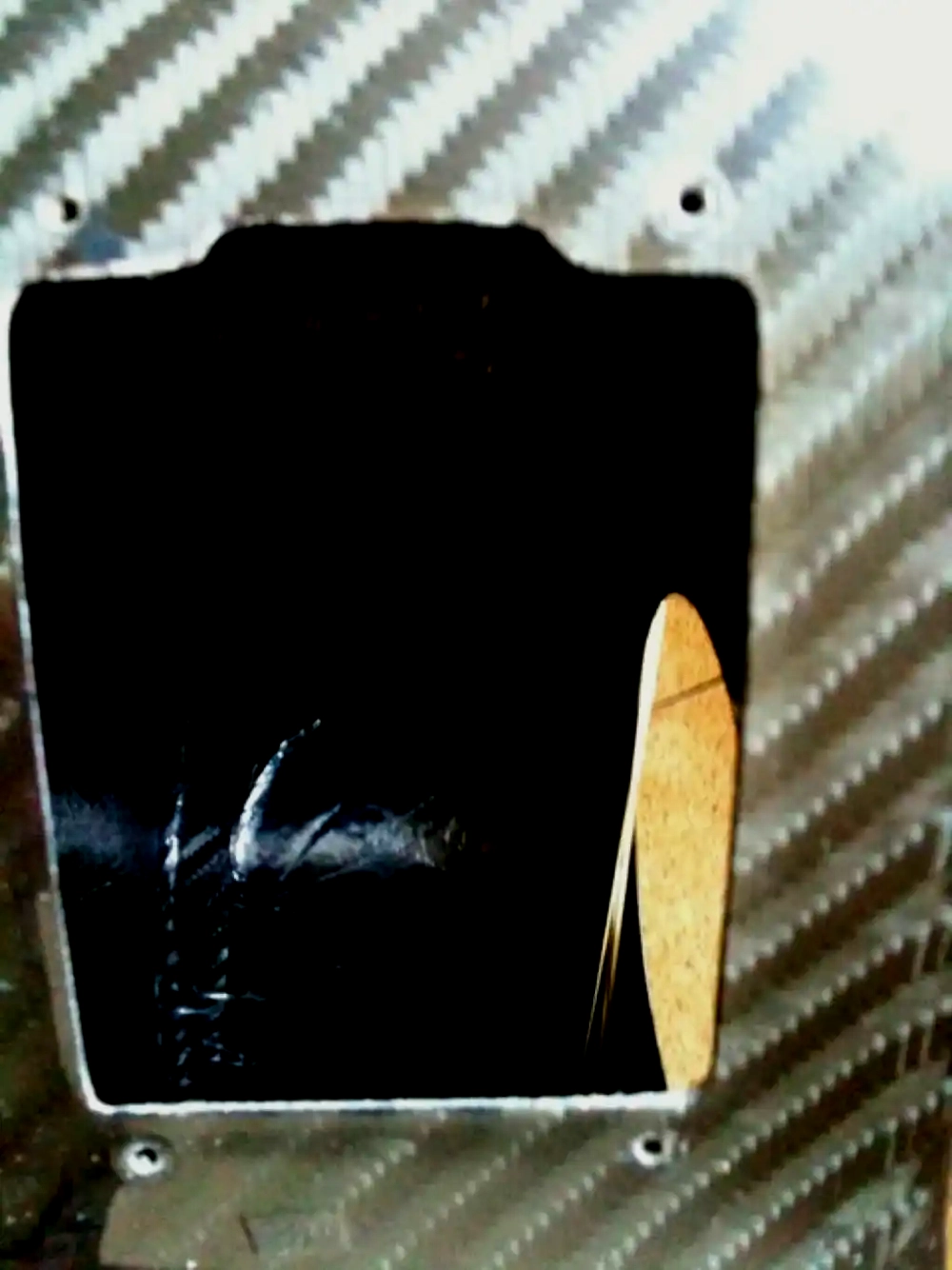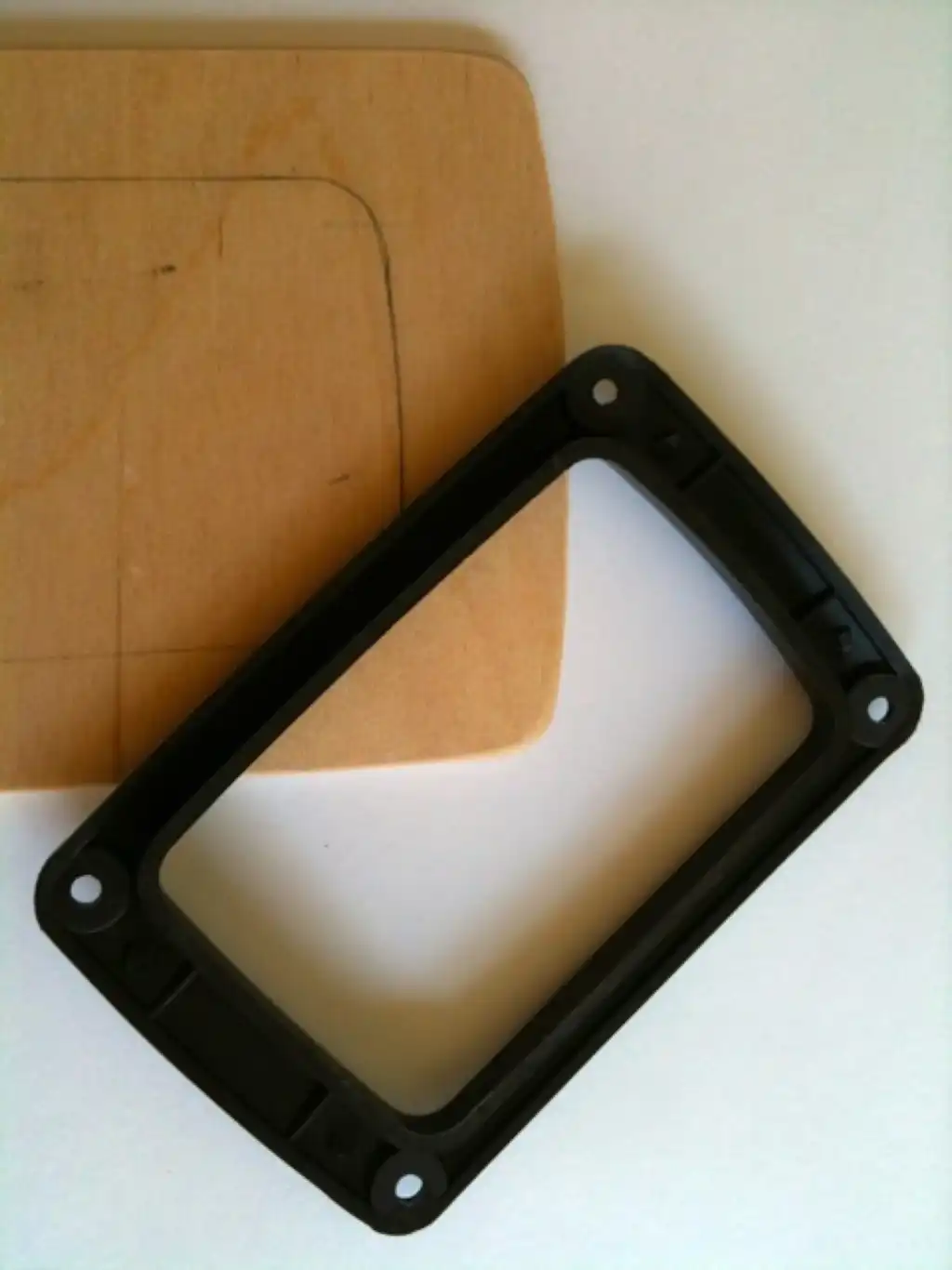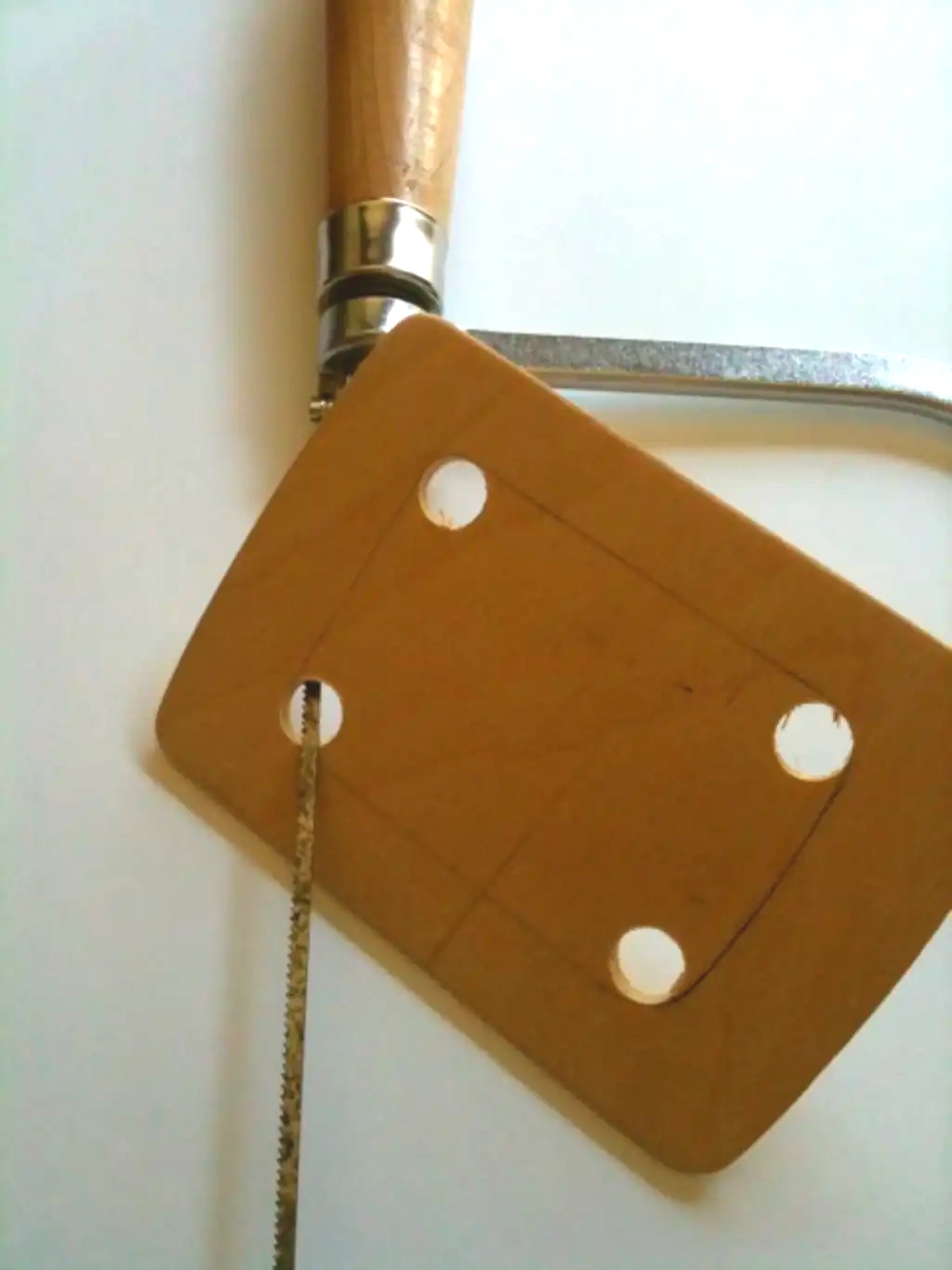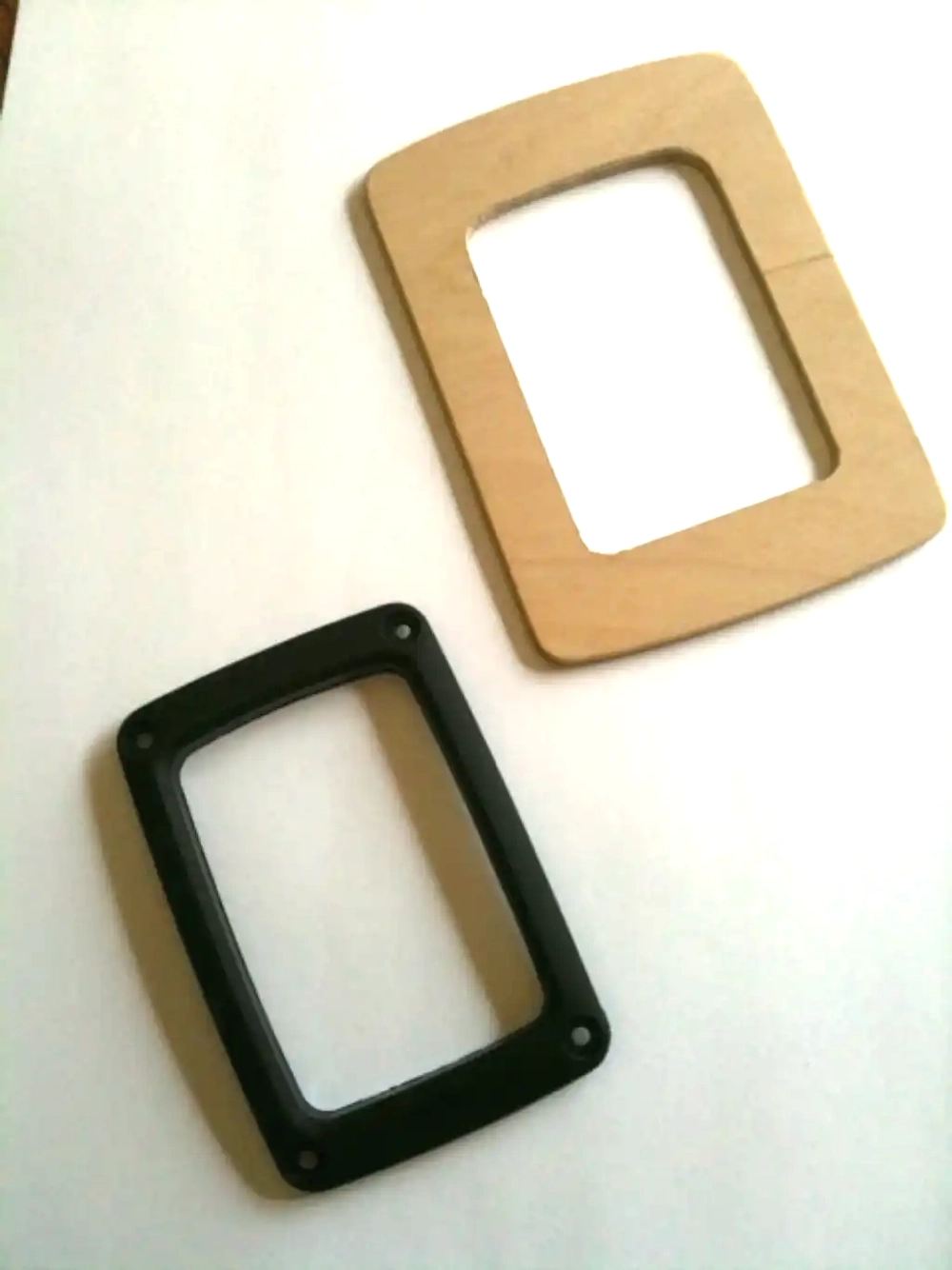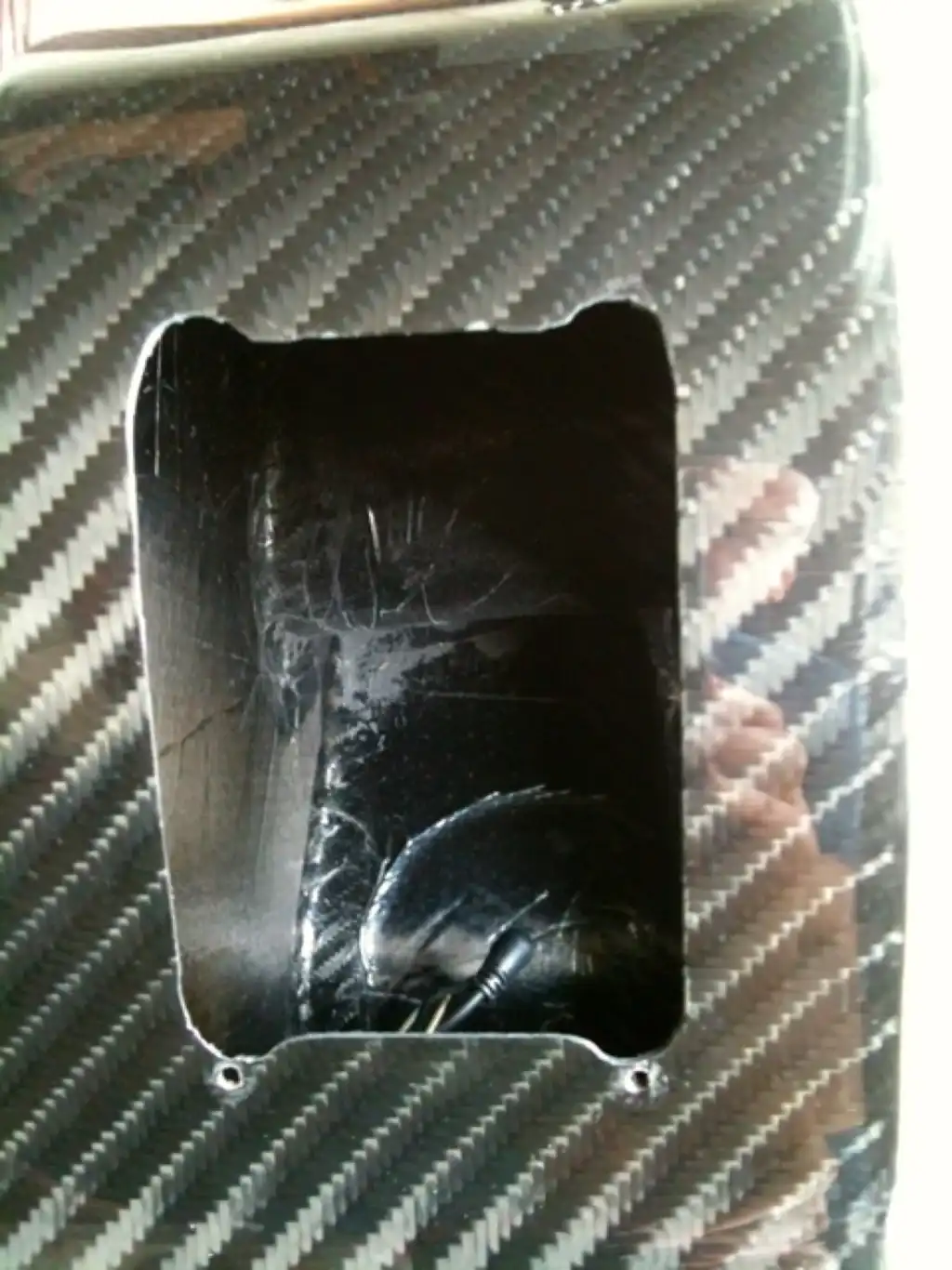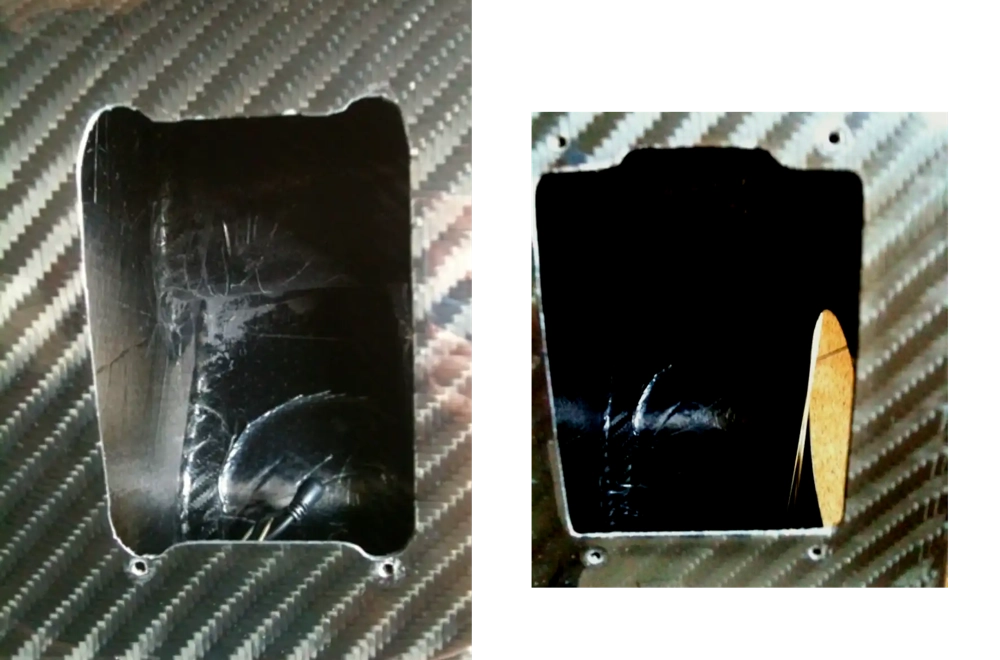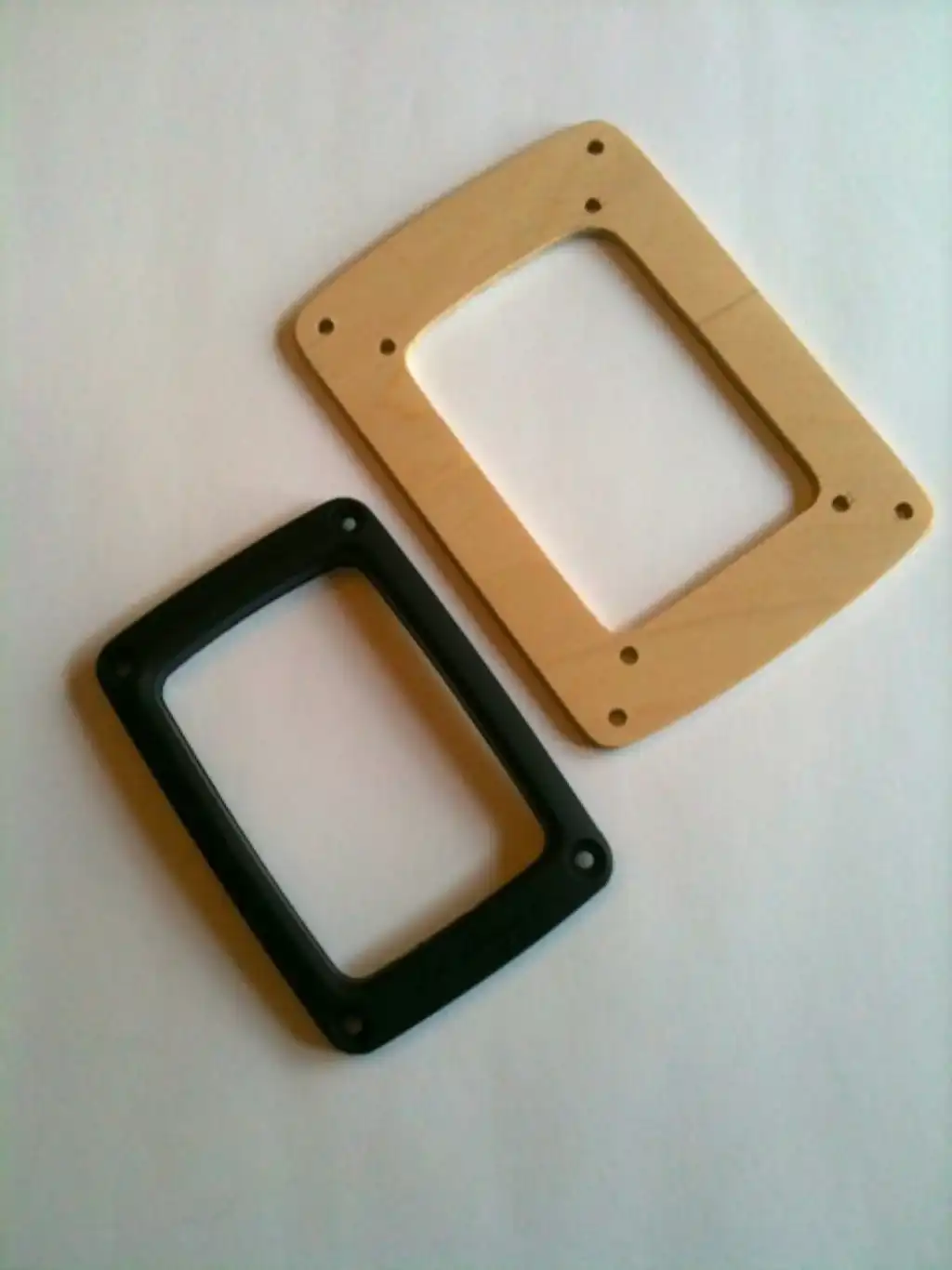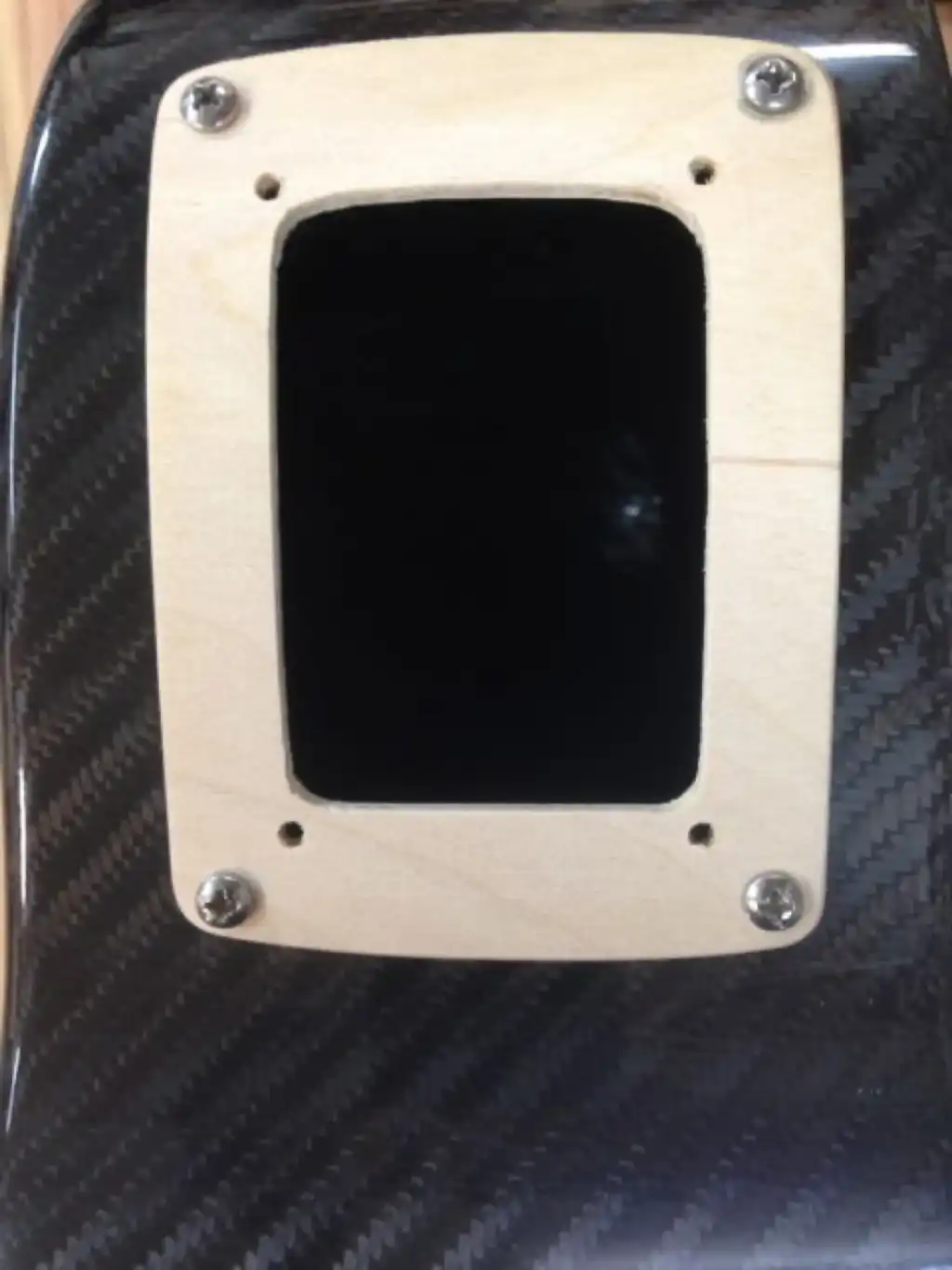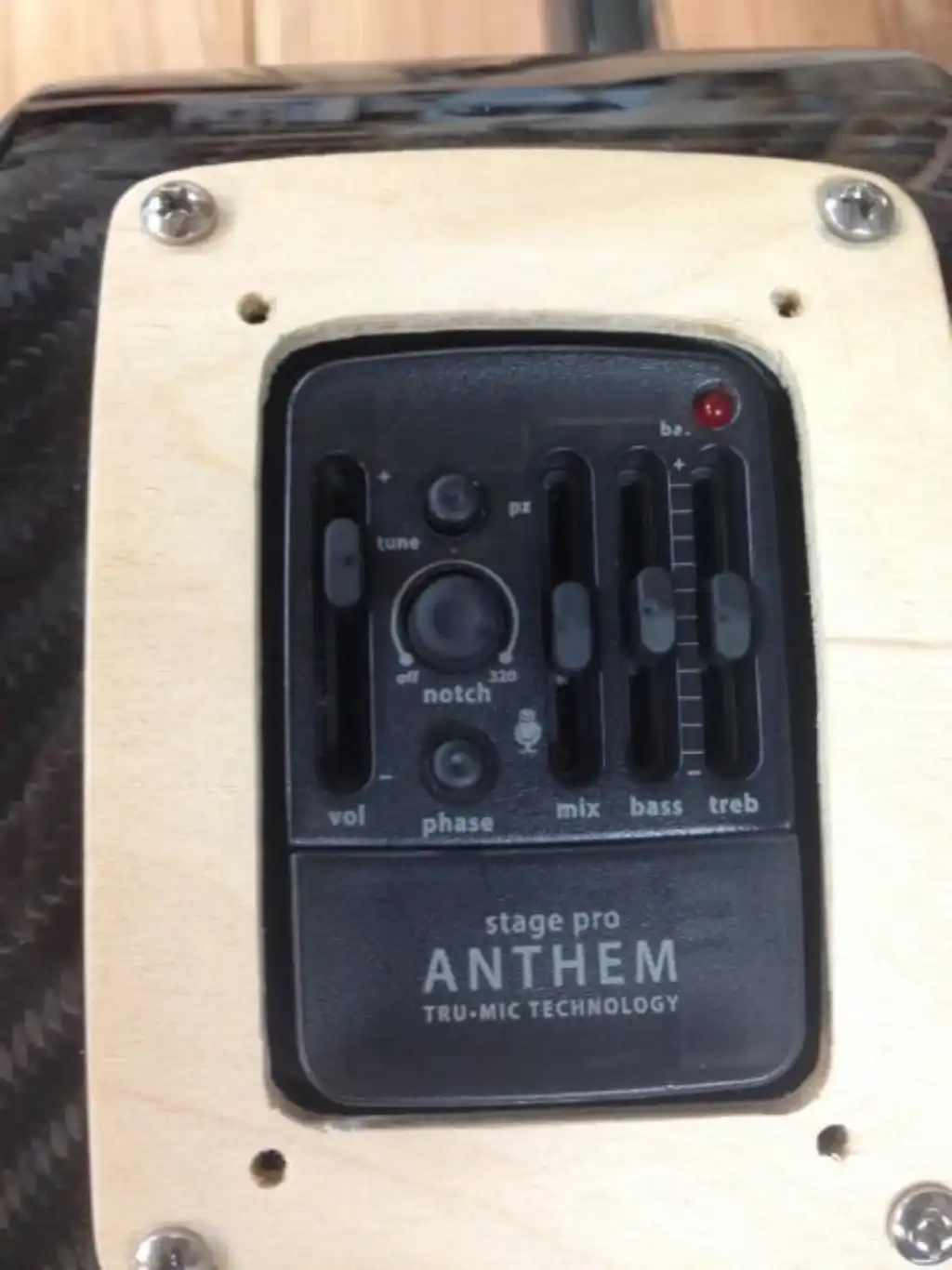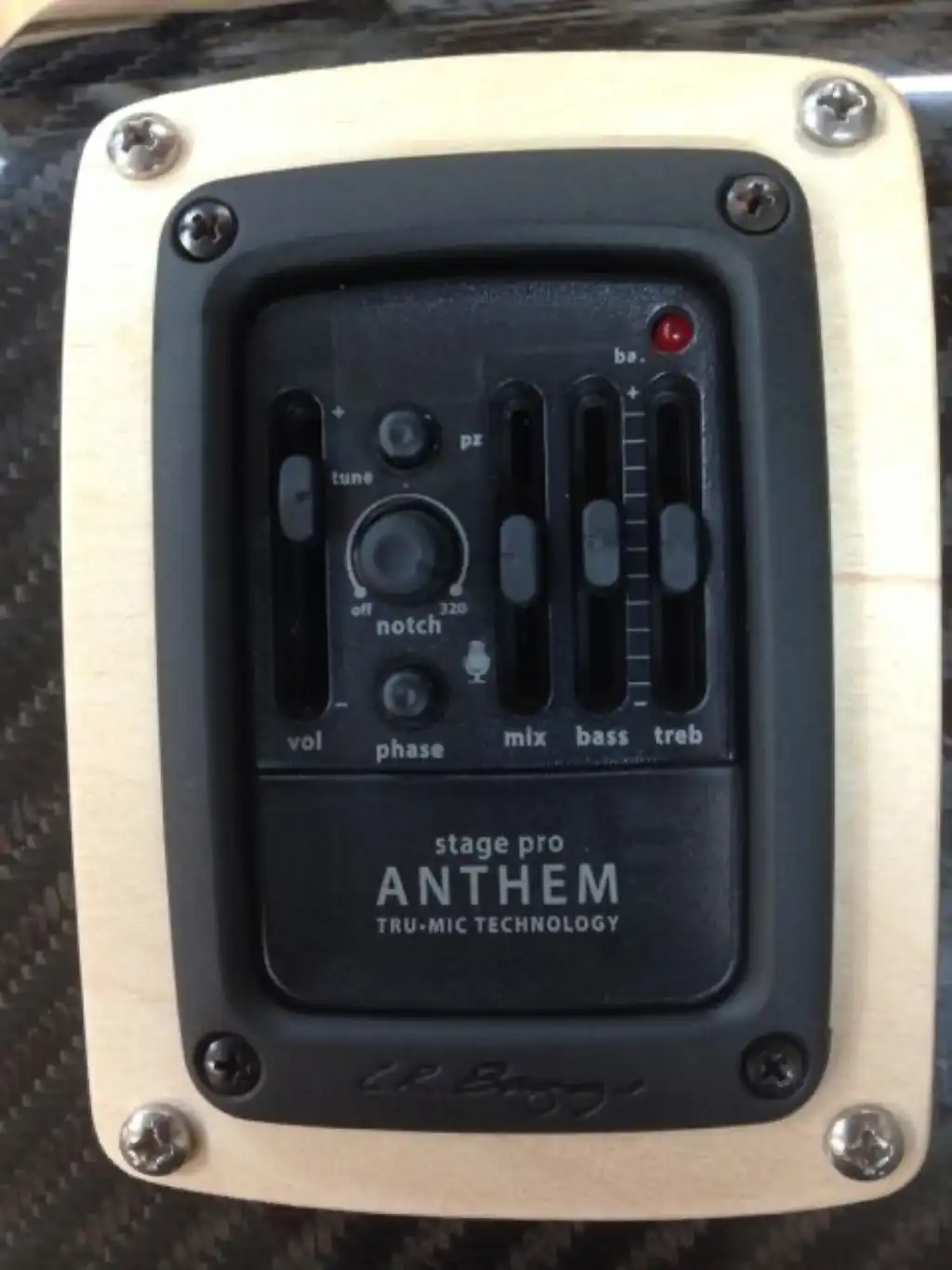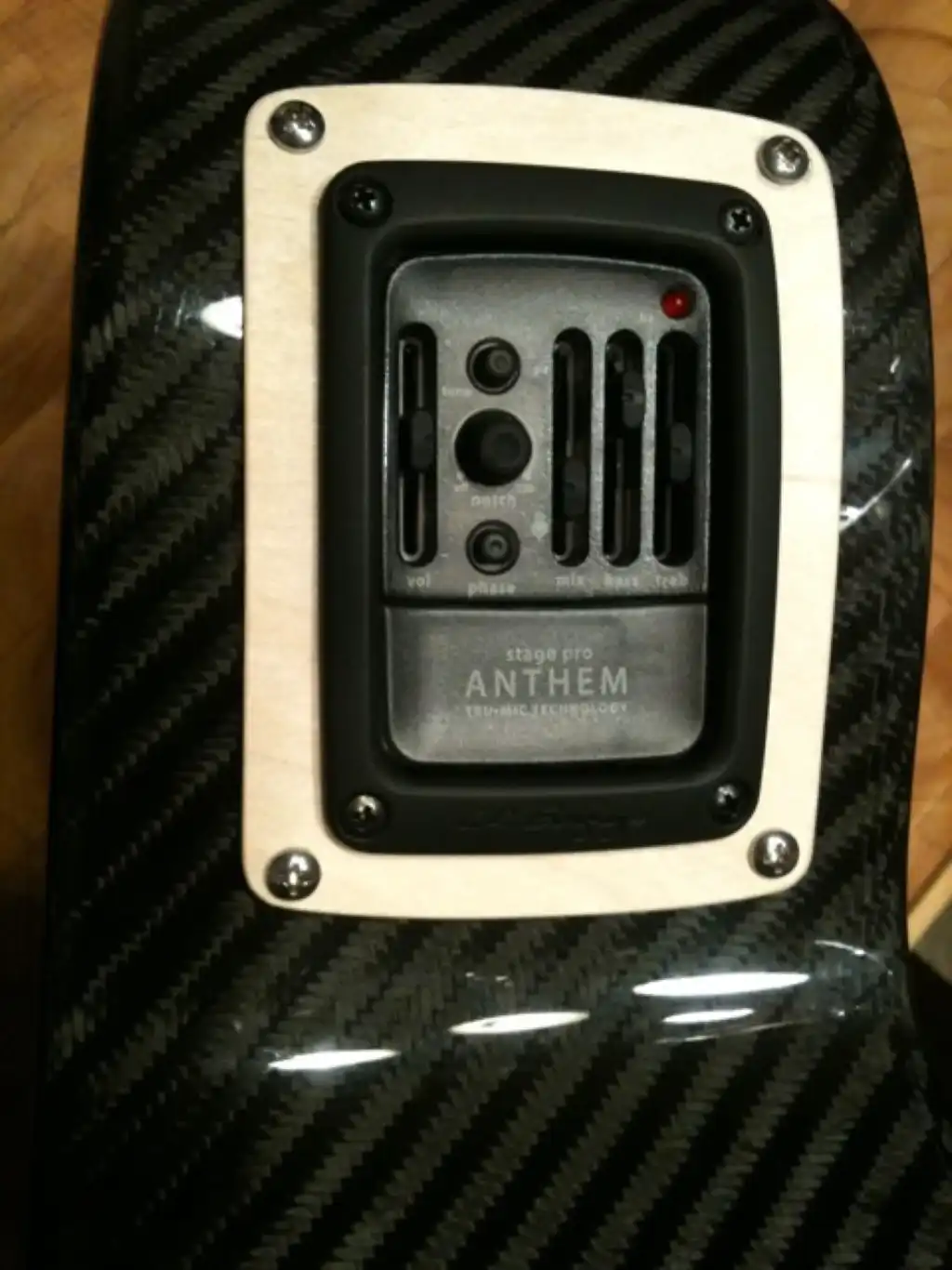A variety of materials can be used to make the reducer, such as bent hardwood, plastic (flexible - not brittle), or even metal. For this prototype, I chose to use a piece of 1/8″ plywood (the type available at most craft stores). This material would be easy to sculpt, have sufficient strength, and be readily bendable. The first step was to size the reducer appropriately. In my example, it ended up being 3″ wide and 4.25″ long. Those dimensions were determined as an average of what was necessary to span the existing hole in the guitar, provide sufficient support for the new preamp, and look somewhat like it belonged. I gently contoured both ends of the wood following the contour of the stage pro housing ring for a pleasing appearance.

